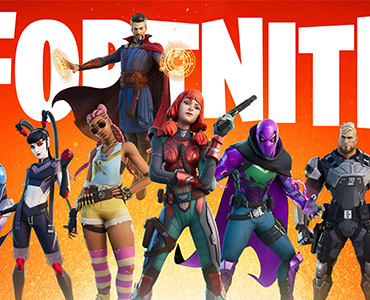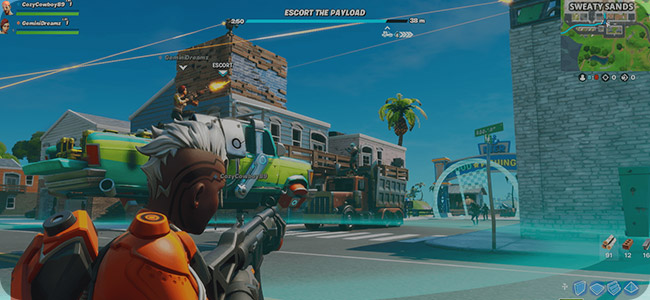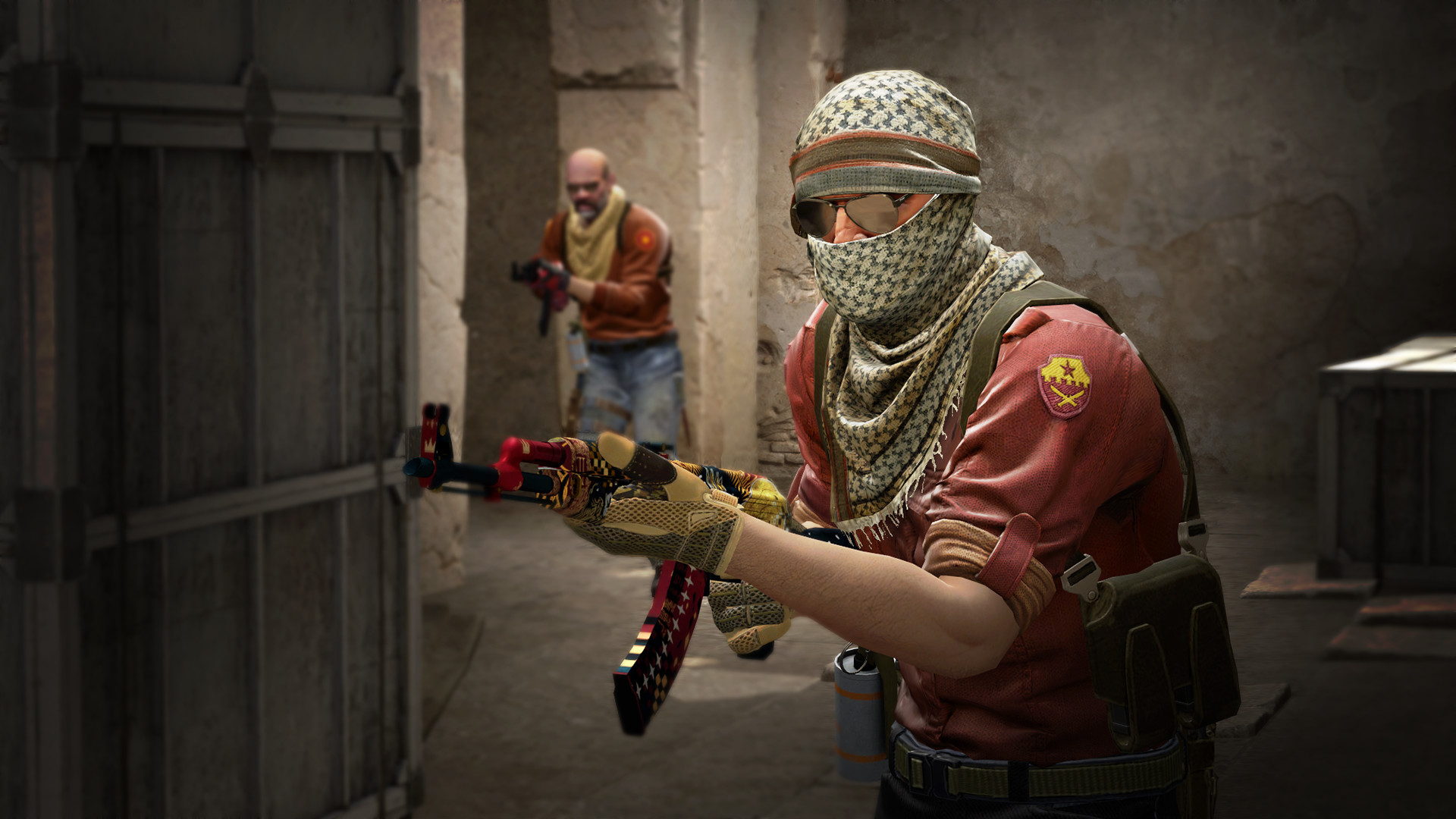Fortnite Review
Fortnite
- 4.8
- 2.3M
- 4.8
- 2.3M
- 36GB
- Action
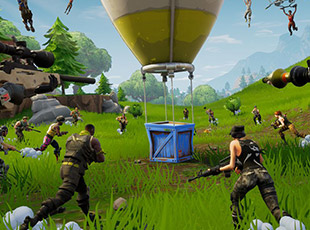
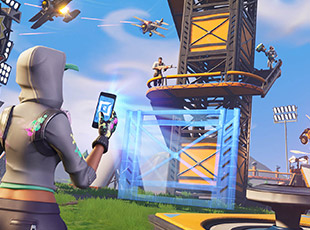
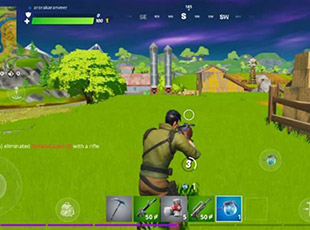
For a game that was long in development as a cooperative horde-based shooter, the conspicuous and relatively quick addition of battle royale to Fortnite seemed to be a move to capitalize on a trend. However, its seemingly simple building system and loose shooting mechanics not only set it apart from other games built on the same premise, but work extremely well to make a uniquely chaotic and surprisingly deep deathmatch experience.
Everything about Fortnite's presentation emits a lighthearted tone. You start a match by jumping out of a party bus held up by balloons that flies across the game's massive map. Weapons, ammo, and health items litter its silly-named cities, all using alliteration--Tomato Town, Moisty Mire, Tilted Towers, to name a few. Even enemies don't really die; they're teleported away after getting knocked out. Valuable loot is found inside pinatas called supply llamas, for crying out loud. Players throw up basic structures formed out of thin air and firearms brightly express their trajectory. But don't let that first impression fool you; the further you get into a match, the more you see how Fortnite's gameplay elements have to be used in clever and complex ways to emerge victorious.
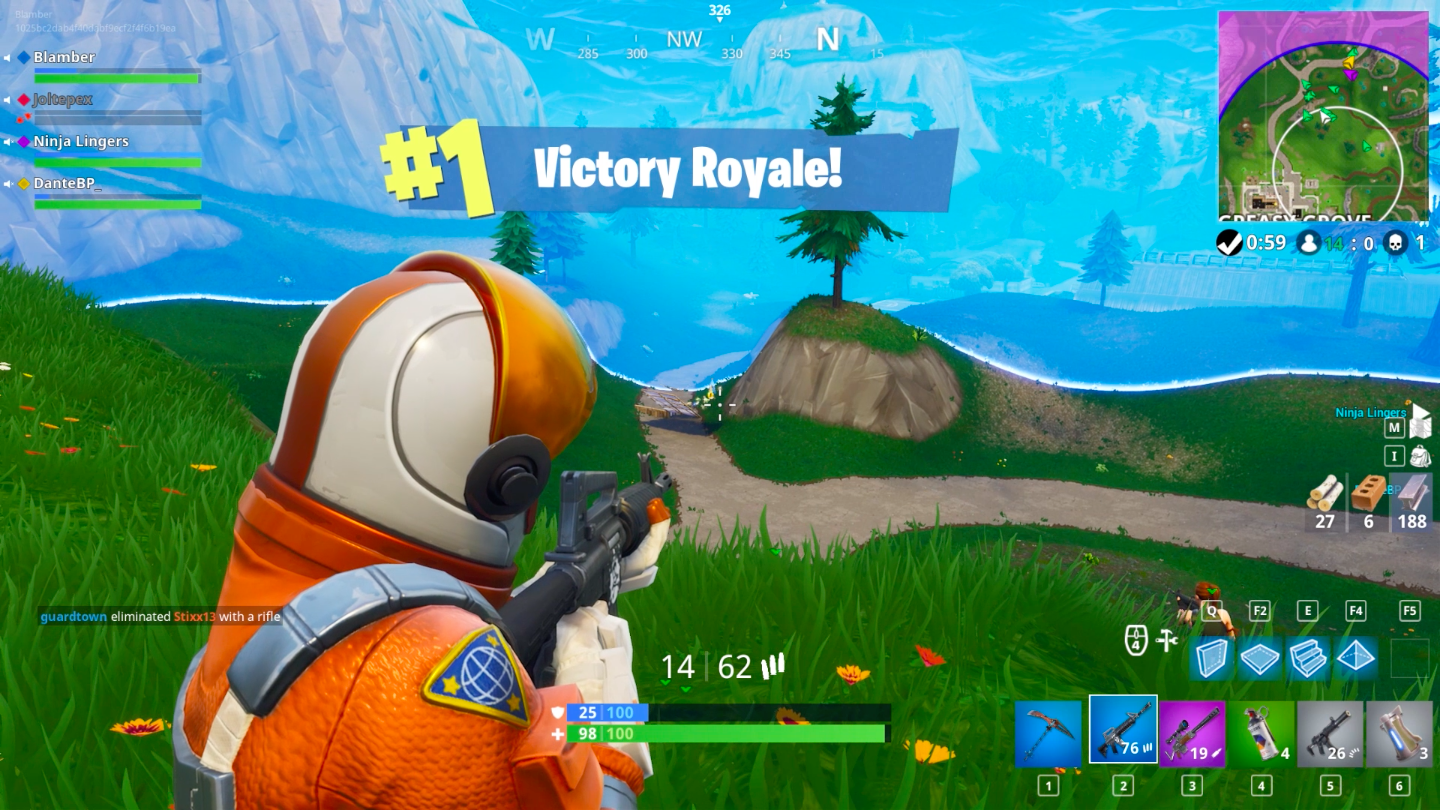
Unique to Fortnite is a streamlined building system comprised of four components: walls, ramps, floors, and roofs. These are constructed with three different types of materials that you either mine with a pickaxe or scavenge across the map; wood, stone, and metal each have their own properties in terms of durability and build speed. You can further modify structures to have windows and doors. It seems convoluted, but thanks to snappy grid-based layouts and the intuitive control scheme, getting the hang of building isn't much of a hurdle.
